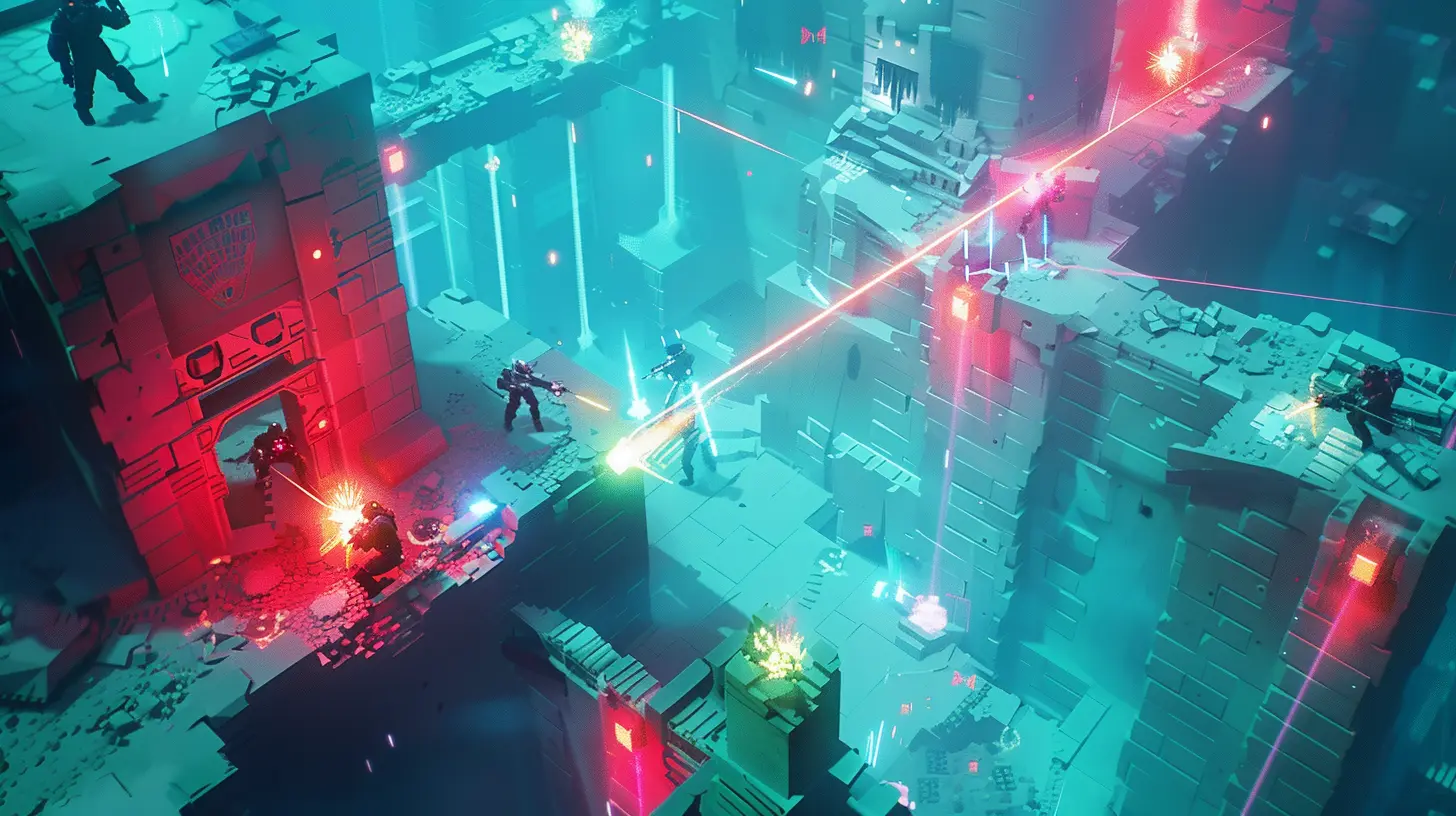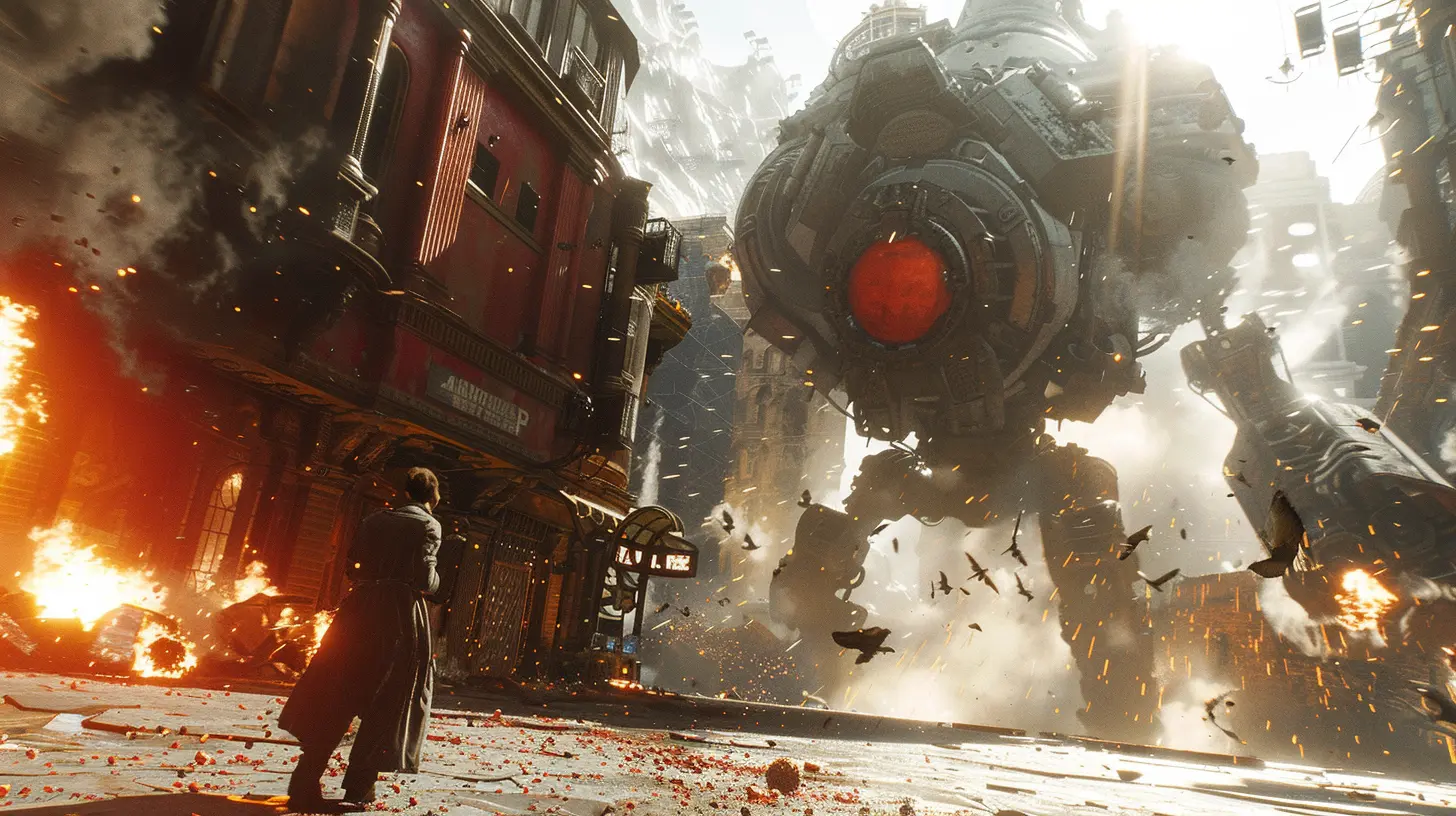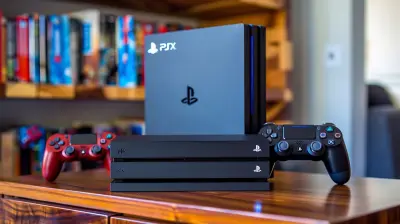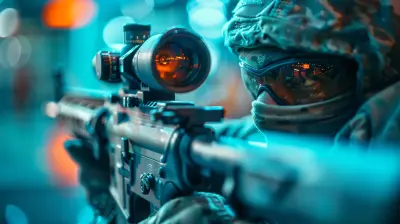The Importance of Hit Detection in Action-Packed Games
14 July 2025
Let’s talk about something that can make or break your gaming experience in action-packed games—hit detection. You know that jaw-clenching moment when you're in a heated battle, you land a perfect swing, blast, or shot, and… nothing happens? Yeah, that's a hit detection issue.
Hit detection might sound like a behind-the-scenes technical detail, but it’s the heartbeat of any fast-paced, adrenaline-pumping game. Without it, you're not battling enemies—you're battling the game’s mechanics. It's the invisible force standing between “Game Over” and “Victory Royale.”
In this article, we’re diving deep (but not boring-deep) into why hit detection is so essential, how it works, and what it means for your gameplay. Buckle up, because this tiny detail carries massive weight in making games feel responsive, fair, and let’s be honest—just plain fun.
What is Hit Detection Anyway?
Alright, let’s start from the top.Hit detection is the system a game uses to determine whether one object makes contact with another—usually whether a player's attack connects with an enemy. Think of it as the referee in a fighting match. It watches every jab, punch, or combo to see if it actually hits the opponent.
Without it, your sword swing might pass right through an enemy like a ghost, or an enemy might hit you through a wall. Not cool, right?
Now, there are two basic ways games handle hit detection:
- Hitbox-Based Detection: This uses invisible shapes (usually boxes or capsules) around characters or objects. If these shapes touch, the game registers a hit.
- Pixel-Perfect Detection: Much rarer, but more precise. It checks the exact pixels of two objects to see if they overlap.
Each has its pros and cons, but we’ll get to that later.
Why You Should Care About Hit Detection
Let’s be honest—most gamers don’t think about hit detection unless it fails. But here’s the thing: when it works perfectly, you don’t notice it. You just feel like a boss.Here’s why it matters:
1. It Makes Combat Feel Real
You dodge, roll, aim, and shoot based on timing, right? Imagine timing the perfect headshot in a first-person shooter, only for it to miss because the game didn't register it right. Frustrating, isn’t it?Good hit detection ensures your skill is rewarded. It gives you that “Yes! I nailed it!” moment that makes gaming addictive in the best way.
2. It Keeps Games Fair
Ever screamed "That didn’t even touch me!" while playing PvP? That’s poor hit detection messing with your fair play.Games like Call of Duty, Fortnite, or Apex Legends rely on clean hit registration to ensure both sides play by the same rules. If one player gets hits that don’t register, it’s not a fair fight. And when things get unfair, the fun fades fast.
3. It Boosts Immersion
Good hit detection pulls you deeper into the game world. When your actions have immediate, real consequences—like landing a critical hit, stunning an enemy, or dodging a bullet by an inch—you feel present. You feel like you’re really there, in the heat of battle.Bad detection? It’s like a glitch in the Matrix. It breaks the illusion and reminds you, “Hey, you’re just pushing buttons.”
The Role of Hitboxes: Invisible But Vital
Let’s get a little technical—but stick with me, it’s worth it.Hitboxes are the invisible outlines that define a character or object’s area for hits, damage, or interaction. Think of them as personal bubbles. They can be simple rectangles or complex shapes depending on the game.
Here’s how they work:
- Your attack has a “hurtbox”—where it can deal damage.
- The enemy has a “hitbox”—where it can take damage.
- If the hurtbox overlaps with the hitbox at the right time, bam—hit registered.
That’s the magic formula.
Different Types of Hitboxes
- Static Hitboxes: These don’t move or change shape. They’re used in older or simpler games.- Dynamic Hitboxes: Adjust based on character animations. More common in modern games for realism.
Want a real-life analogy? It’s like fencing. If the blade touches your opponent’s body (hitbox), you score. But if it just swings through air (no overlap), no points.
Lag, Latency, and Why Hit Detection Sometimes Sucks
Ever feel like your shots are delayed or don’t hit? You’re probably dealing with lag or latency.In online games, your actions have to travel through the internet to the game server. If there’s a delay, your “perfect shot” might not be so perfect anymore. That’s when hit detection gets muddy.
Different games handle this in different ways:
- Client-Side Detection: Your game says if a hit landed. Faster, but can be exploited.
- Server-Side Detection: The server decides. Slower, but more accurate and fair.
Some games use “lag compensation” to fix this—basically predicting where a character should have been when you fired. Sounds like magic? It's hardcore programming wizardry, and yes, it makes a difference.
When Hit Detection Goes Wrong
Let’s list the disasters caused by poor hit detection:- Phantom shots: Your bullets do nothing.
- Ghost swings: Melee attacks go through enemies.
- Wall hits: You get hit from the other side of a wall.
- Unfair deaths: You swear you dodged, but the game says otherwise.
Each one pulls you out of the experience and makes the game feel cheap. And guess what? Players leave games that feel unfair. That’s why developers pour so much time into refining hit detection systems.
Not Just Shooters and Fighters
You might think hit detection only matters in FPS or fighting games. But you'd be surprised.1. Platformers
In games like Celeste or Super Meat Boy, landing on tiny platforms requires pinpoint accuracy. If the hit detection doesn’t match the visuals—say goodbye to your sanity.2. Action RPGs
Swinging your sword in Elden Ring or Dark Souls? You need to know when your weapon will actually connect. Mistiming a hit because of sloppy detection? That’s a recipe for rage-quitting.3. Sports Games
Think about FIFA or NBA2K. Shot accuracy, ball control, player collisions—all rely on tight hit detection. One bad call, and it's hours of play gone sour.The Future of Hit Detection
As games get more realistic, hit detection has to keep up. We’re talking:- Procedural hitboxes that adapt to animations
- Machine learning to predict movement and reduce lag
- 3D hit detection with full body physics
Developers are also using motion capture and real-time input prediction for smoother results. The ultimate goal? Make hit detection invisible—so smooth and natural, you never even think about it.
And with the rise of VR and AR? Oh boy, hit detection just got a promotion. When you are the controller, the stakes get even higher.
How Gamers Can Tell Good from Bad Hit Detection
Okay, so how do you feel the difference as a player?Here’s what to watch for:
- Responsive feedback: Hits feel instant and satisfying.
- Consistency: Same actions yield the same results.
- Precision: The hit area matches the actual object.
- Trust: You believe what you see on screen.
If a game nails these points, give the devs a virtual high-five. That’s a sign of top-tier hit detection.
Final Thoughts: It's All in the Details
Hit detection is like the sound system in a movie. You may not notice it when it’s flawless, but the moment it falters—you feel it.Whether you're spraying bullets in a chaotic battlefield, dodging attacks in a boss fight, or timing a jump in a tricky level, hit detection is your invisible partner. It’s the unsung hero of game design, quietly making sure your actions have meaning, your victories feel earned, and your frustration stays minimal.
So next time you land that satisfying headshot or narrowly dodge an attack, give a silent nod to hit detection—it’s working hard behind the scenes to make your gaming experience seamless, fair, and insanely fun.
Game on!
all images in this post were generated using AI tools
Category:
Game MechanicsAuthor:

Pascal Jennings
Discussion
rate this article
1 comments
Kristy McAlister
This article beautifully highlights a crucial aspect of gaming that often goes unnoticed. Hit detection plays a vital role in our immersive experiences, shaping our enjoyment and satisfaction. Thank you for shedding light on this important topic; it truly resonates with those of us passionate about action-packed gameplay.
July 22, 2025 at 3:31 PM

Pascal Jennings
Thank you for your thoughtful comment! I'm glad you found the article highlights the significance of hit detection in enhancing our gaming experiences. Your passion for action-packed gameplay is truly appreciated!


